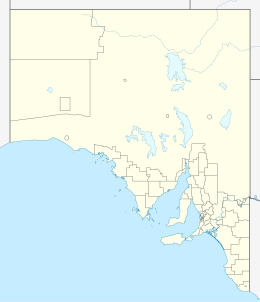Flinders Island, South Australia
| Geography | |
|---|---|
| Location | Great Australian Bight |
| Coordinates | 33°42′49″S 134°29′49″E / 33.71367°S 134.49686°ECoordinates: 33°42′49″S 134°29′49″E / 33.71367°S 134.49686°E |
| Area | 3,642 ha (9,000 acres) |
| Highest elevation | 66 m (217 ft) |
| Administration | |
|
Australia
|
|
Flinders Island is an island in the Investigator Group off the coast of South Australia. It was named by Matthew Flinders after his younger brother Samuel Flinders, the second lieutenant on HMS Investigator in 1802. It is part of the Investigator Group Important Bird Area. The island has been subject to diamond exploration following the discovery of a wide range of kimberlite indicator minerals there. These minerals include chromite, pyrope, diopside, picroilmenite, forsterite, orthopyroxene, as well as small diamonds.
Flinders Island supports a colony of little penguins which in 2006 was believed to be "probably declining", with a population of less than twenty birds. An account of Flinders Island's wildlife published in 1934 stated that penguins could "be seen waddling soldier-like among the rocks and cave entrances that constitute their homes."
Flinders named the island after Samuel Flinders, the sloop’s second lieutenant and his younger brother on Saturday, 13 February 1802.
The Flinders Island Whaling and Sealing Site is listed on the South Australian Heritage Register.
A strip of land along the north coast of the island extending west from the island’s most northerly headland, Point Malcolm, has the subject of the subject of a heritage agreement since 29 August 1995. The parcel of land which is identified as No. HA1003 is sized at 279 hectares (690 acres).
Flinders Island is one of the islands included in the Investigator Islands Important Bird Area (sic) identified by BirdLife International.
...
Wikipedia

